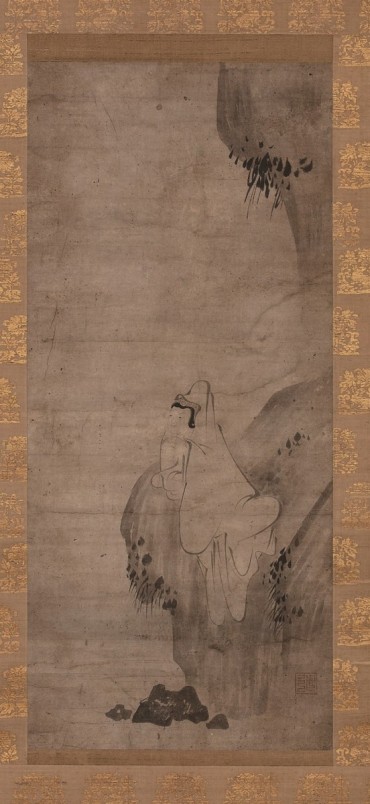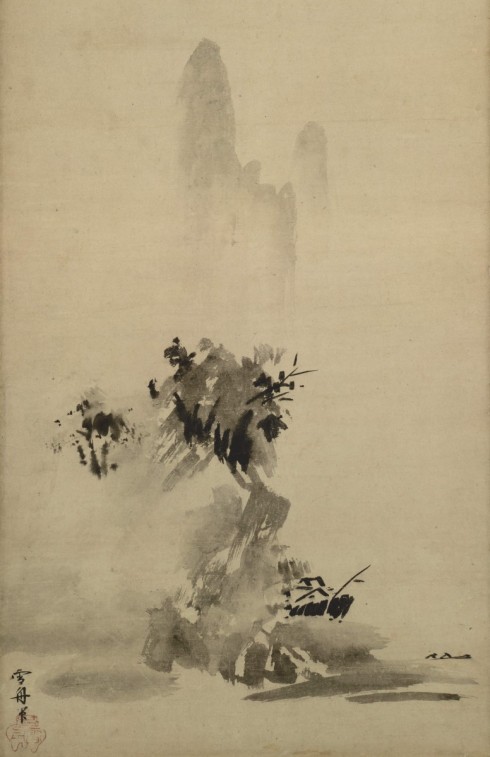Attributed to Shugen (fl. 1469–1521), Japan, Muromachi period; hanging scroll, ink on paper; 32 ¼ x 14 5/16 in.; The Frances Lehman Loeb Art Center, Vassar College, Purchase, gift of Mr. and Mrs. Leo Steinberg (Dorothy Seiberling, class of 1943); Elizabeth Woodcock, class of 1925; Bertha Mather McPherson, class of 1928 and Philip Johnson, by exchange, 2014.29.
Splashed Ink Landscape
Sesshu Toyo (1420–1506), Japan, 1495; hanging scroll, ink on paper; 58 1/2 x 12 7/8 in.; Tokyo National Museum, A-282.
This astonishingly abstract painting, executed by the renowned Japanese artist Sesshu Toyo, exemplifies the “splashed ink” method. This approach is sometimes seen in depictions of the White-robed Kannon. Doing away with contours and outlines, Sesshu seems to have flung the ink at the picture in an unpremeditated manner. Inspiring other Japanese artists, such as the maker of the work on the left, this approach suggests that the bodhisattva spontaneously emerged from an undifferentiated expanse—a formal device that has metaphysical implications.





